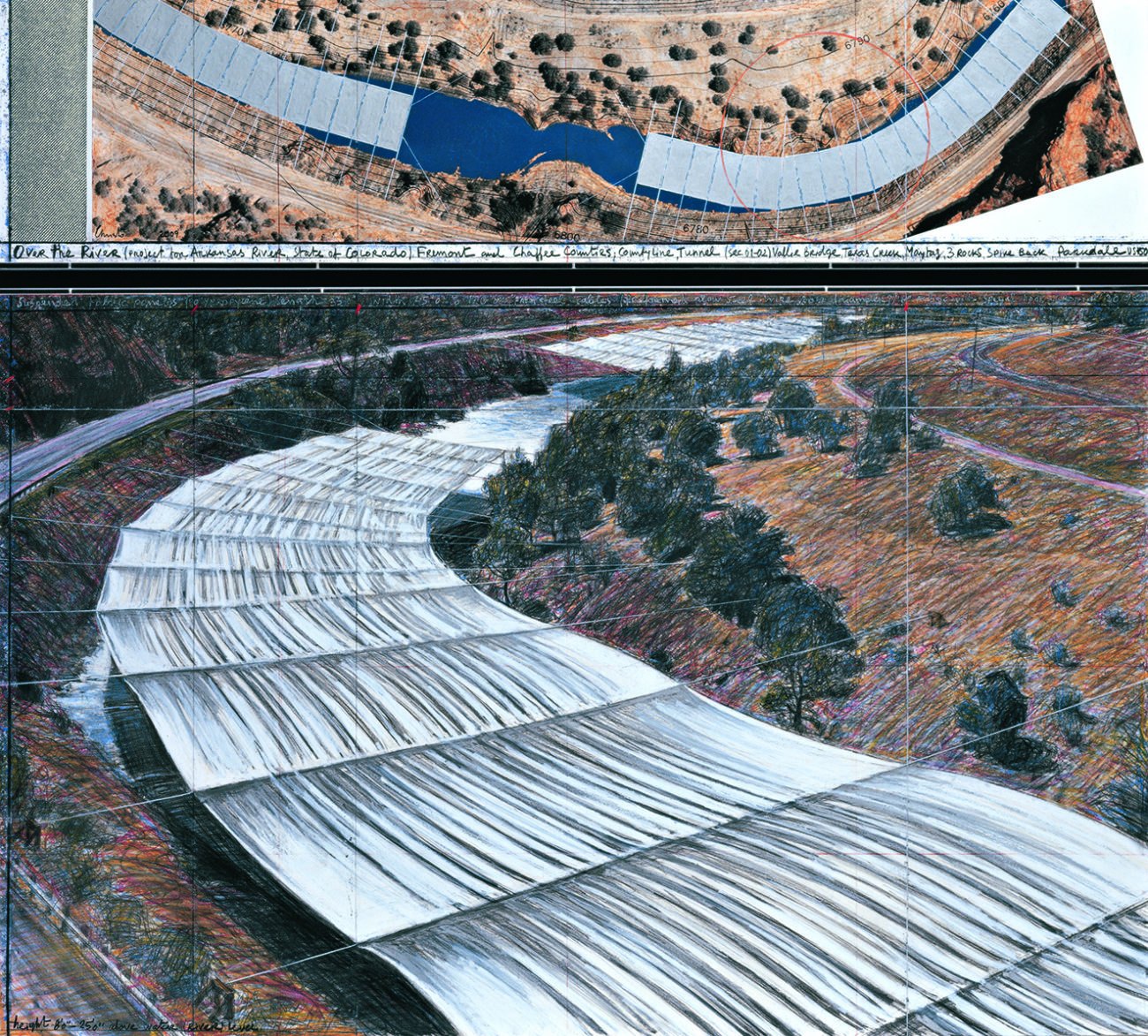Tia Collection is pleased to have four works on loan to the Denver Art Museum. Founded in 1893 as the Denver Artists’ Club, today this institution is one of the largest art museums between Chicago and the West Coast. The museum’s global art collections represent cultures from around the world, with more than 70,000 works of art, including architecture and design, photography, textile art and fashion, African and Oceanic art, Art of the Ancient Americas, Asian art, European and American art before 1900, Latin American art, Modern and Contemporary art, Indigenous Arts of North America, and Western American art.

The museum has undergone an extensive renovation of the building that houses their permanent collection, beginning in 2016. The building was first opened in 1971, the seven-story silhouette is one of the first-ever high-rise art museums and is the only completed building in North America by famous Italian modernist Gio Ponti. This massive project includes realizing Ponti’s originally vision for the 7th floor by expanding the gallery space to include both towers, showcasing the city’s landscape and mountain views.
The 7th floor is home to their Western Art collection and the current installation for the four works on loan from the Tia Collection. We spoke with Jennifer R. Henneman, PhD, Curator of Western American art and the Director the Petrie Institute of Western American Art at the Denver Art Museum about the 7th floor collection and how they selected the paintings from the Tia Collection.

Unlike many other museums, DAM’s 7th floor features historical western artwork juxtaposed with contemporary interpretations of the West. Jennifer shared, “To us, the West is past, present, and future.”
The top floor of the Martin building consists of a diverse group of artists, offering viewers a full timeline of Western Art from the 19th century forward. Jennifer further explained that “the West has always been a diverse place. This is why we work with our colleagues in the Indigenous, Latin American, and Modern & Contemporary art departments and also why we try to acquire and exhibit artworks by artists of diverse backgrounds. Additionally, the opportunity to work with extraordinary collections like Tia helps us tell multi-faceted stories of the West through an array of aesthetic and personal perspectives.”
To us, the West is past, present, and future.
Their current exhibition, A Sense of Place, presents the viewer with the following concepts – “What is the West today? As a region marked by stark contrasts—desert and forest, coast and mountain, urban and rural—there are many responses to this question. Because of this multiplicity, the West remains an inspiring place for contemporary artists. Interested in many of the same subjects on view in the historical galleries on this floor, artists continue to reflect the cultural diversity of the West and the wonders of its natural landscapes while grappling with its challenging history. Additionally, many engage with timely and complex questions about migration, displacement, and belonging. Their work inspires us to ask: What is the West today? Where is my place in it? Through their unique experiences, creativity, and perspectives, artists underscore the fact that the West, like America, has never been a single experience, idea, or place.”

Bernard Williams, Western Woman from the South, 2000.

Each of our four works on loan share that sense of place. As Jennifer points out, “Bernard Williams’ powerful and direct representation Western Woman from the South (2000) reminds us of the contributions of Black women in the West and that these often go unacknowledged. This female figure is a symbol of Black Americans who migrated to territories in the West after the Civil War in search of a better life. She particularly represents the hardships of pioneer life, especially for women resettling on homesteads, ranches, and in cities. Bernard’s work address our connections and disconnections with a turbulent history.”
Esteban Cabeza de Baca’s work does of the same, with much of his work addressing the history of early landscape painting in the West. Jennifer went on to share her thoughts with us – “Ghost Canyon (2019) presents a riot of color and a fascinating interwoven painting process. As a dynamic complement to more traditional landscapes on display, it reveals that the land remains a primary source of inspiration and that artists experiment widely in their approaches to articulating what and where the West is.”

Leon Polk Smith, Constellation Straight Out, 1974
Included in this gallery filled with portraits and landscapes are works the viewer may not expect. Leon Polk Smith is best known for geometrically oriented abstract paintings including his “Constellation” works are generally regarded as a high point in his oeuvre. Born in 1906 to Cherokee farmers in Oklahoma (which at the time was Indian Territory), Smith described the wide-open spaces of the flat plains where “one could see 250 miles in every direction . . . the sky seemed so big . . . almost like an endless space,” and this landscape was a great influence on his work. “Leon Polk Smith’s Constellation Straight Out (1974) fills a hole in our collection of work from the 1970s and combines the influences of the wide-open spaces of the prairie with the geometry of the urban city,” Jennifer shares.
She continues,“The mixed media drawing of Christo and Jeanne-Claude’s Over the River (2011) is a beautifully rendered vision of an ambitious Colorado project that, sadly, was never completed and reveals the way some artists have approached the land itself as a medium or protagonist in artistic production.” While some of these works are not “traditional” forms of Western American art, they are very important to telling the story of the West and its history.


